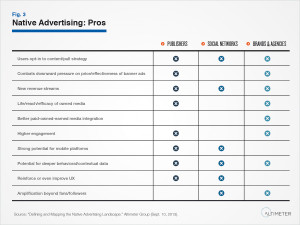
Just like in the real world, in the world of the Internet, your competition may try to sabotage your business. One of the ways they can do that is negative SEO. Negative SEO is a practice where your competition uses black hat and other unethical ways to hurt your search engine rankings. These type of attacks can be carried out in a number of ways.
Unethical businesses can implement negative SEO attacks by hacking into your website. They might build hundreds, or even thousands of spammy links to your website. They may put out fake reviews of your business to destroy your reputation. All of this has one aim. To destroy your good search engine ranking, while at the same time elevating their own.
Other Information About Negative SEO You Need To Be Aware Of
Sites that have strong domain authority are less likely to be target of a negative SEO campaign. It is also very risky for any business to take part in a negative SEO attack, and most legitimate businesses would never take that risk. Most search engines, including Google, have a system to review sites that could be affected. To avoid becoming a victim of negative SEO, you must keep a close eye on factors that can be manipulated such as backlinks and reviews.
Defending Your Website From Negative SEO
You should know that there is no clear set of negative SEO tactics you can use to defend yourself. Negative SEO campaigns that are carried out by nefarious professionals will identify the weaknesses of your website, and look for ways to exploit them. But that in no way means you are defenseless.
Your very best defense is to have a website that has a solid SEO focused foundation. You can also monitor your crucial ranking metrics for unexplained changes and foul play. If you do not have an established relationship with Google, do what you can to get an open and honest relationship started. That may be difficult since they are not known for the best customer service, and some might even claim that it is non existent.
According to Matt Cutts, one of Google’s software engineers, “piling links onto a competitor’s site to reduce its search rank isn’t impossible, but it’s extremely difficult.”
Google actually made things worse for those looking to defend themselves from negative SEO attacks with one of their Penguin algorithm updates and one of the later Google Webmaster Tools message warning sites of paid links. These made it hard for Google to tell whether a site has a serious issue involving negative SEO, or if the owner of a website is playing fast and loose with the rules.
If you have not done it yet, be sure to connect your website to Google Webmaster Tools Email Alerts. Once you have done this, Google will notify you via email when one of these things happens:
- Malware is detected on your website and an active attack is taking place
- Your website is experiencing server connectivity problems
- You receive a manual penalty from Google
- Your web pages are not indexed
Above all, you must keep track of your backlinks profile. There are tools you can use including Open Site Explorer or Ahrefs that can manually check if someone is building links to your website, with negative SEO and has sabotaging your website on their mind. There also exist many Android apps and iPhone apps that can help your SEO and help you keep a tab on the latest tools to safeguard your website.
Negative SEO is not that common as of now, and most industries are free from it. But that does not mean you could not become a victim. Use the information provided here to guard your website, and keep a close eye on your Google Ranking, and take action if anything looks fishy.
By Michael Wight | December 28, 2015 |


